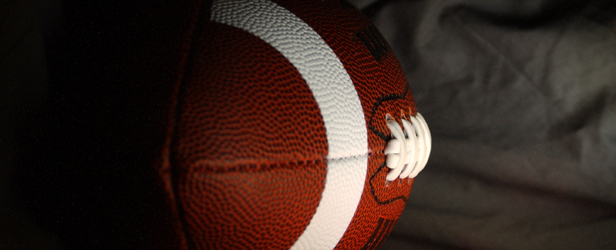
Where the hell did we go so wrong when it comes to football speed training? When did it become acceptable to pass off the hard work that entails training for football speed and replace it with fairly easy cone drills and gadgets?
Football speed is about strength. How strong you are and how explosive you become because of that strength is what leads to getting faster for football. Football speed is not track speed. Reread that…football speed is not track speed.
I’ve heard so many track coaches lament, “We work with them all off-season and their sprinting form goes to hell two weeks into the football season.” Yea, thank God. The reason is we run in a perfect straight line in perfect form in perfect conditions how many times per game? Seriously, think about that. Maybe when a running back breaks a long one or when a wide receiver gets a step on a back, but other than that, the game is played in stop and go spurts, hard cuts, plants and jumps, and with, of course, tons of hitting.
But the fun doesn’t stop there. There is an entire industry set up to separate players and coaches from their money by promising quick fixes and gimmicks and by perpetuating old myths about football speed training so that you remain weak, slow, and broke.
Time to get down and dirty and kill some football speed training myths:
1. Agility drills improve football agility.
Note how I phrased that. Agility drills do improve your agility…in agility drills. Running through cones looks cool. It looks like a hell of a lot of work is being done, and it’s usually set up to be complicated, thus improving its effectiveness. Plus, it’s usually marketed by big companies who pay models to run through cones wearing their overpriced spandex so that it looks super high tech and gets people to fork over the loot. But just because someone looks good doing something doesn’t mean it’s really worthwhile.
They look good playing, but I wouldn’t want them on my team.
Do yourself a favor. Take all the cones and bury them. After the very beginning stages, they’re only good for parallel parking practice. Sure, you can take a 14-year old player who’s never done anything athletic and see improvement by having him zigzag through cones. But, after a few months, the return on investment in the way of getting faster for football will be nil.
If you want to improve foot speed so you’re actually faster on the football field, try some clean and jerks or even the basic jump rope. It’s not sexy, but it’s effective.
2. Lifting heavy slows you down
This is the granddaddy of all football speed training myths. I think it was started long ago in some HIT-Jedi cave on Dagobah.
Yoda: Strong enough to pick up an X-Wing, fast enough to fight guys four feet taller than him.
The HIT-ers, CrossFitters, and various other “strength is bad” fanatics contend that because the bar moves slowly when lifting max weights, the central nervous system will learn this and turn you into a big, slow, Gilbert Brown wanna be.
We all know that if you apply max force to the bar, even if that sucker is moving slow, the intent to move it quickly will improve both your strength and speed. You should always be applying maximum force to the bar. Your training should be centered around this concept.
Now, if you bench 200 lbs and try for 205 lbs, it isn’t going to fly up. It might even go slow. But the intent to move it quickly is what counts. It trains your nervous system (brain) to be fast even with heavy weights. It’s the same for any kind of lifting, whether it’s football related or you’re just trying to get bigger and stronger. It also has to do with muscle fiber types, but that’s a long and boring explanation.
So you always want to push/pull/squat the bar as hard as you can. Or as Mel Siff said in Supertraining:
“To increase speed, it is necessary to increase the magnitude or duration of the force applied (or both) or decrease the mass of the body. However, for practical purposes, not all of these possibilities can be achieved in human movement. The athlete is unable to decrease the mass of his body or an item of standard athletic apparatus or increase the duration of t (time) of a given movement. However, it is possible to increase the time of a movement of limited amplitude only by decreasing its speed, which is nonsense. Consequently, only one recourse remains, namely to increase strength. Maximum strength is the main factor determining speed of movement!”
3. You need gimmick devices to get faster for football.
I’ll keep this one short because otherwise I’ll go into a rage. You don’t need a parachute unless you’re jumping from a plane. If you want to wear “strength shoes” with the huge heel in the front, alter them. Put the heel in the back and pretend to be a stripper because that’s about the only use for a shoe with a nine-inch block on the underside of it.
All these gimmick products are good for selling but bad for speed. They have little to no value, especially when compared to good, old-fashioned, hard lifting. But tell a 15-year-old sophomore that to improve football speed he needs to do gut busting box squats, not go traipsing around with a parachute on, and you’ll see one disappointed football player!








